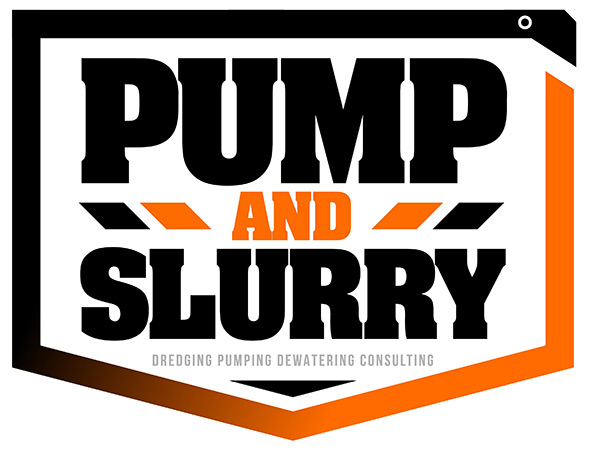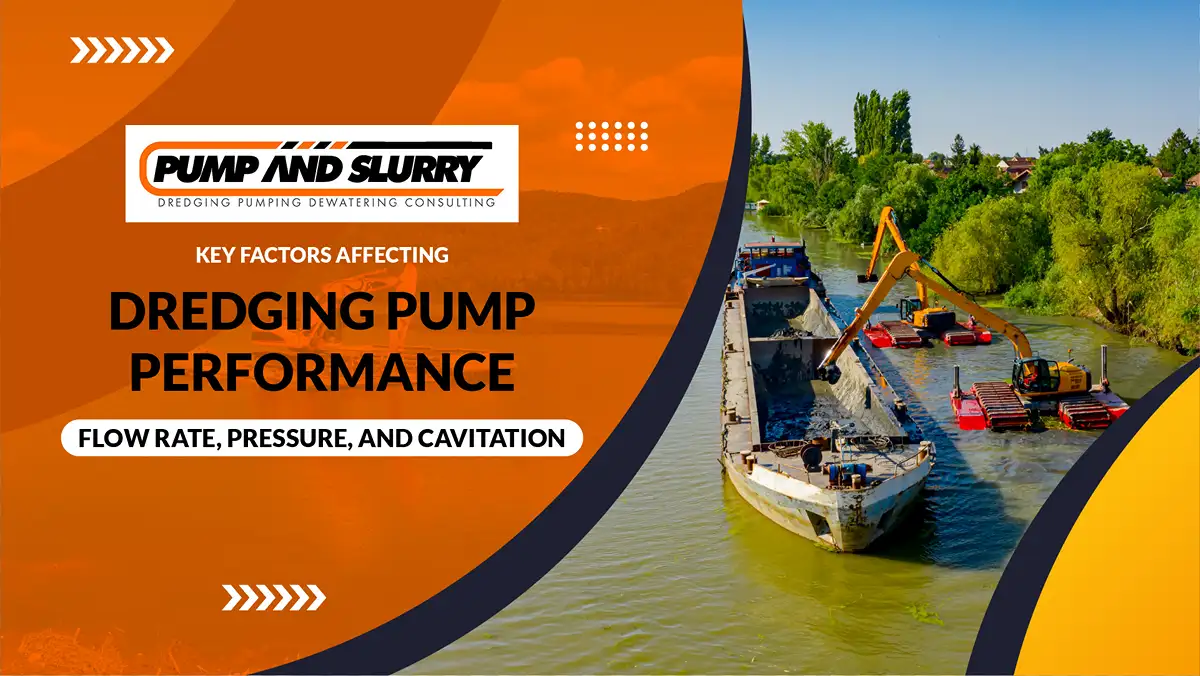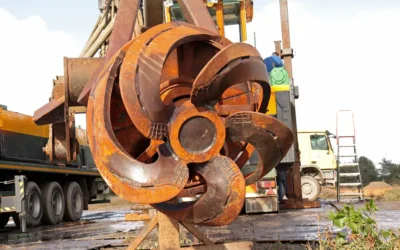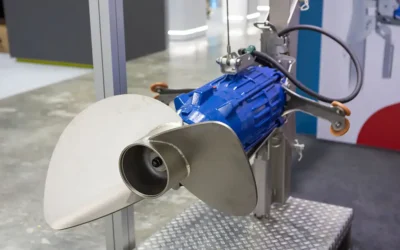Introduction
Dredging pumps are crucial to the success of dredging operations, whether they are used to remove sediment, debris, or water from various water bodies or construction sites. Their efficiency and reliability directly influence the outcome of dredging tasks. However, several key factors determine how well a dredging pump performs, including flow rate, pressure, and cavitation. Understanding how each of these elements impacts performance can help operators optimize their equipment for better results and longer operational life. In this blog, we will dive deep into these factors and explore how they affect dredging pump performance and how to address them effectively.
1. Understanding Dredging Pumps
A dredging pump is a type of pump designed to handle the tough task of moving sediments, mud, or slurry in dredging operations. These pumps are engineered to manage high volumes of fluid, often mixed with particles of varying sizes, and transport it over long distances. The design and capabilities of a dredging pump make it a key piece of equipment for any dredging project.
Types of Dredging Pumps
There are various types of dredging pumps used for different dredging applications, with the most common being centrifugal and diaphragm pumps.
- Centrifugal Pumps: These are widely used in dredging operations due to their ability to move large quantities of slurry. They use centrifugal force to move the water or slurry through the pump, making them efficient for long-distance transport.
- Diaphragm Pumps: These pumps are used in situations where a higher level of precision is needed. They rely on a diaphragm that creates suction to move the material. They are typically used in environments where more delicate handling of slurry is required.
Choosing the right dredging pump depends on factors such as the type of dredging project, the materials being pumped, and the distance the slurry needs to be transported.
Importance of Selecting the Right Dredging Pump
A well-selected dredging pump can enhance operational efficiency and reduce the costs associated with maintenance and downtime. Pumps that are ill-suited for the task at hand can lead to performance problems, increased wear and tear, and reduced operational lifespan.
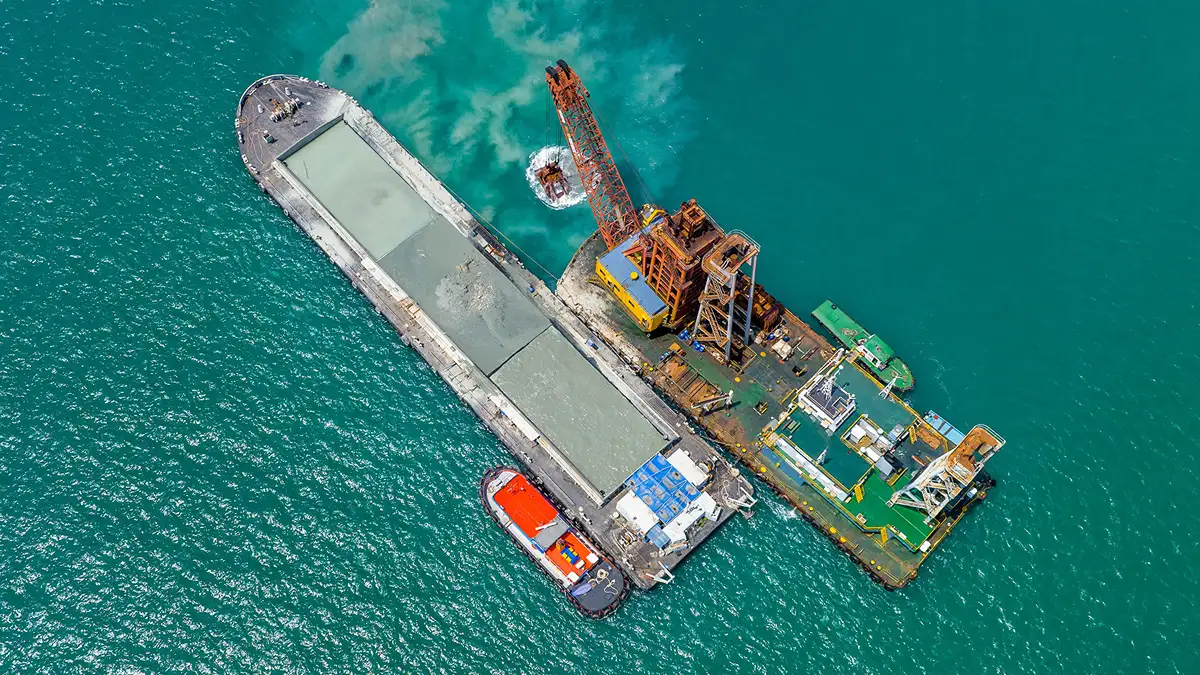
2. Flow Rate: The Lifeblood of Dredging Pumps
Definition of Flow Rate
Flow rate refers to the volume of material or fluid that a it can move within a given time frame, typically measured in cubic meters per hour (m³/h). This is a critical metric when assessing the capabilities of a dredging pump since the efficiency of a dredging operation often depends on how quickly the pump can handle the material.
Impact of Flow Rate on Performance
The flow rate of a dredging pump is directly linked to how efficiently the pump can move slurry or water. A higher flow rate means that the dredging pump can move more material in less time, making the overall operation more efficient. However, there are trade-offs, such as the need for more energy to maintain higher flow rates, which can lead to increased operational costs.
In dredging operations, the primary goal is often to achieve the optimal flow rate that maximizes productivity while maintaining operational cost efficiency. If the flow rate is too low, it may result in slow project completion times, while excessively high flow rates can lead to inefficient fuel consumption and unnecessary wear on the pump components.
Factors Influencing Flow Rate
Several factors influence the flow rate of a dredging pump, each playing a crucial role in how efficiently the pump operates during dredging operations. These factors include:
- Pump Design: The overall design of the dredging pump, including the size and configuration of the impeller and the casing, directly affects the flow rate. Larger impellers generally allow the dredging pump to move more material at once. However, the pump’s design must be carefully matched to the specific demands of the dredging project. If the design doesn’t align with the material type or operational conditions, it could lead to inefficiencies.
- Impeller Size: The size of the impeller in the dredging pump determines how much material the pump can handle at a given time. A dredge pump with a larger impeller moves more slurry, but it may also require more power to operate, leading to higher energy costs. It is essential to select a dredge pump with an impeller size that is well-suited for the project’s requirements to balance performance and energy consumption.
- Slurry Density: The density of the slurry being pumped significantly impacts the flow rate. Denser materials, such as those found in harbor maintenance dredging or riverbed cleaning, require more energy to pump through the system. When dealing with more viscous slurry or slurry with larger particles, a dredging pump’s flow rate may decrease due to the increased resistance. Therefore, selecting the right dredging pump that can handle these dense materials effectively is crucial for maintaining an optimal flow rate.
- Hose Length and Diameter: The length and diameter of the hoses used in the dredging operation also affect the flow rate of the dredging pump. Longer hoses and smaller diameters increase friction, which can reduce the efficiency of the dredge pump and ultimately slow down the flow rate. Reducing hose length or increasing the diameter can help minimize friction and optimize the flow rate of the dredging pump.
Optimizing Flow Rate
To optimize the flow rate, operators should consider the specific requirements of the dredging project, including the type of material being dredged and the distance it needs to be transported. Proper dredging pump sizing is crucial for ensuring the pump can handle the expected material efficiently. Additionally, adjustments to the impeller size, hose configurations, and operational speed of the dredge pump can help achieve the desired flow rate while minimizing energy consumption. By selecting the right dredge pump for the project and making the necessary adjustments, operators can improve the efficiency of the dredging pump, ensuring that it performs optimally throughout the dredging operation.
Choosing the Right Dredge Pump Based on Flow Rate
When selecting a dredge pump, it is essential to match the pump’s flow rate with the project’s specific needs. Understanding the optimal flow rate for the materials being dredged is critical. A dredge pump for sale that offers the right flow rate capabilities can greatly improve operational efficiency and lower the risk of delays due to pump inefficiencies.

3. Pressure: Maintaining Efficiency and Power
Understanding Pressure in Dredging Pumps
Pressure within a dredging pump is a critical factor that determines how effectively the pump can push slurry or other materials through the pipeline. Pressure refers to the force exerted by the pump to move the material from one point to another. The right amount of pressure ensures that the material is transported efficiently without causing damage to the pump or the pipeline.
How Pressure Affects Dredging Pump Performance
Pressure plays a crucial role in dredging pump performance because it affects the pump’s ability to overcome the resistance created by the distance the material needs to travel and the friction within the hoses and pipes. Too little pressure can result in inefficient slurry movement, while too much pressure can lead to pump failure and damage to the pipeline.
The relationship between flow rate and pressure is fundamental: if a pump is designed to move large volumes of material (high flow rate), it needs to generate sufficient pressure to push that material through the pipeline. Conversely, if it operates at too high a pressure without sufficient flow rate, it may cause cavitation or damage the pump’s components.
Pressure vs. Flow Rate
A delicate balance between pressure and flow rate must be maintained. As the flow rate increases, the pressure typically decreases unless additional energy is added. Conversely, higher pressure can lead to lower flow rates. It’s important to manage these variables to ensure that the dredging pump operates within its optimal parameters.
Challenges of Managing Pressure
Managing pressure requires careful monitoring. Operating a dredging pump at excessively high pressures can cause unnecessary wear on the components and increase the risk of cavitation, while too low a pressure can result in sluggish performance and potentially incomplete dredging tasks.
Ways to Manage and Optimize Pressure
Operators can manage pressure by using various tools such as pressure relief valves and adjustable throttles. Regular monitoring of pressure gauges can ensure that the pump operates at the appropriate level. By balancing the flow rate and pressure, operators can optimize the efficiency of the dredging pump and reduce wear and tear on the system.
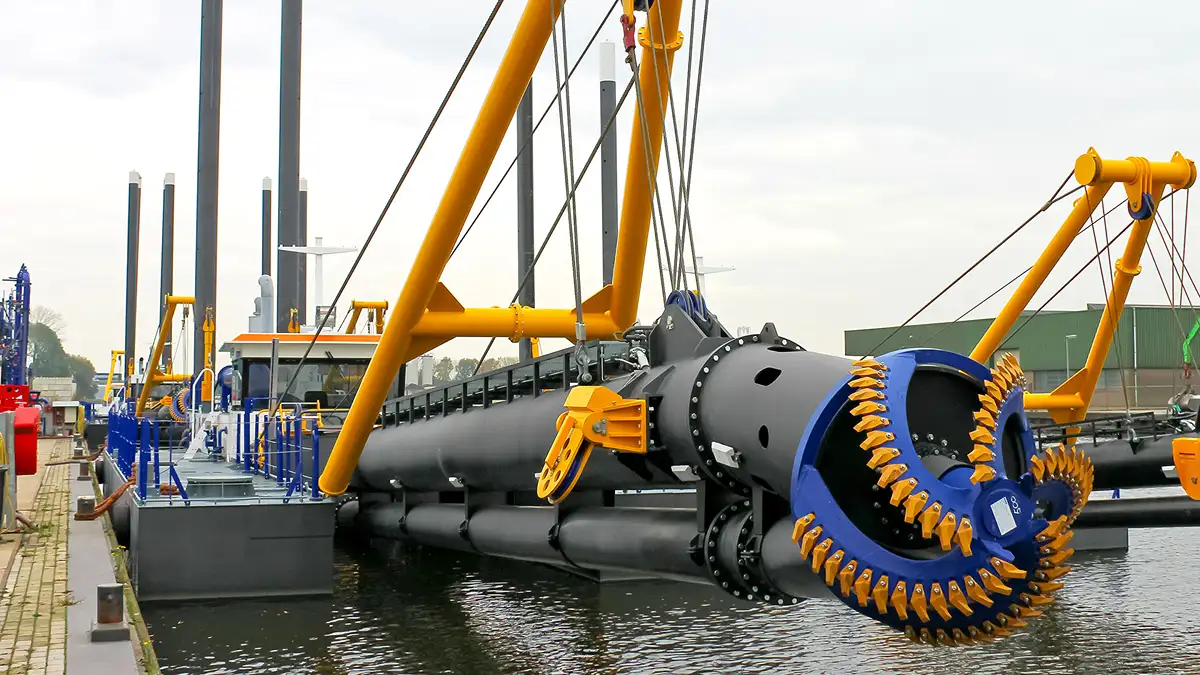
4. Cavitation: A Silent Killer of Dredging Pump Performance
What is Cavitation?
Cavitation is the formation of vapor bubbles within the pump when the local pressure falls below the liquid’s vapor pressure. When these bubbles collapse, they can create high-energy shock waves that can damage the dredging pump components, such as the impeller and housing. Cavitation is one of the most damaging phenomena that can affect pump performance.
How Cavitation Affects Dredging Pump Efficiency
Cavitation leads to erosion, vibration, and noise, reducing the efficiency of the dredging pump. Over time, the damage caused by cavitation can significantly impair pump performance, leading to higher maintenance costs and reduced lifespan of the pump.
In dredging operations, cavitation can occur due to improper pressure settings, excessive flow rates, or poorly designed dredging pumps. When cavitation is not addressed, it leads to suboptimal performance of the dredging pump, resulting in greater fuel consumption and higher operational costs. A dredge pump experiencing cavitation will also suffer from increased wear on its components, which may shorten its lifespan and increase maintenance expenses. Ensuring that it is operating under optimal pressure and flow conditions is crucial for preventing cavitation and maintaining efficient operation. Proper pump design and regular maintenance of the dredge pump are essential to mitigate these issues and avoid unnecessary costs.
Identifying Cavitation Issues
Signs of cavitation include unusual noises coming from the pump (often described as a “gravel” sound), vibrations, and a noticeable reduction in performance or pressure. Monitoring these indicators can help operators identify cavitation early and take corrective action.
Preventing Cavitation
The most effective way to prevent cavitation is to ensure that the dredging pump operates within its designed pressure and flow rate ranges. Proper pump sizing and regular maintenance are key to preventing cavitation. Additionally, using high-quality materials for pump components can help reduce the risk of cavitation damage.
Solutions for Cavitation Problems
If cavitation occurs, it can be addressed by adjusting the operational settings of the dredging pump, such as reducing the flow rate or increasing the pressure to prevent the formation of vapor bubbles. In some cases, installing a more robust or specialized pump designed to handle cavitation-prone environments can be a viable solution.
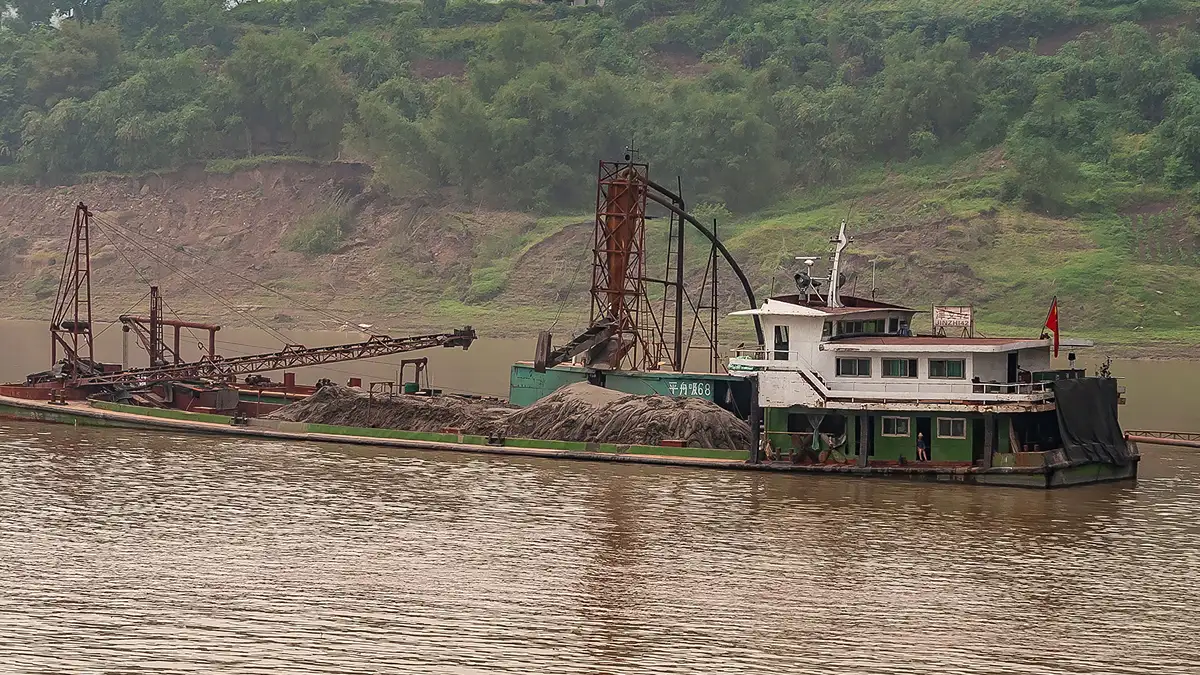
5. Optimizing Dredging Pump Performance
Routine maintenance, proper equipment selection, and operator training are essential to maintaining peak dredging pump performance. By focusing on optimizing flow rate, pressure, and cavitation management, operators can significantly improve the efficiency and lifespan of the pump.
Routine Maintenance and Inspection
Regular maintenance, including checking for wear and tear on pump components and ensuring proper lubrication, helps prevent performance issues. Scheduled inspections allow for early identification of problems, which can be addressed before they lead to costly repairs or downtime.
Upgrades and Technological Innovations
New advancements in dredging pump technology, such as improved impeller designs and materials resistant to cavitation, can further optimize performance. Upgrading older equipment with modern features can enhance efficiency and reduce the likelihood of breakdowns.
Training and Best Practices for Operators
Proper training of operators is critical to ensuring the dredging pump is used optimally. Knowledge of how to adjust flow rate and pressure based on the material being dredged and maintaining the pump at peak performance is vital for avoiding operational issues.
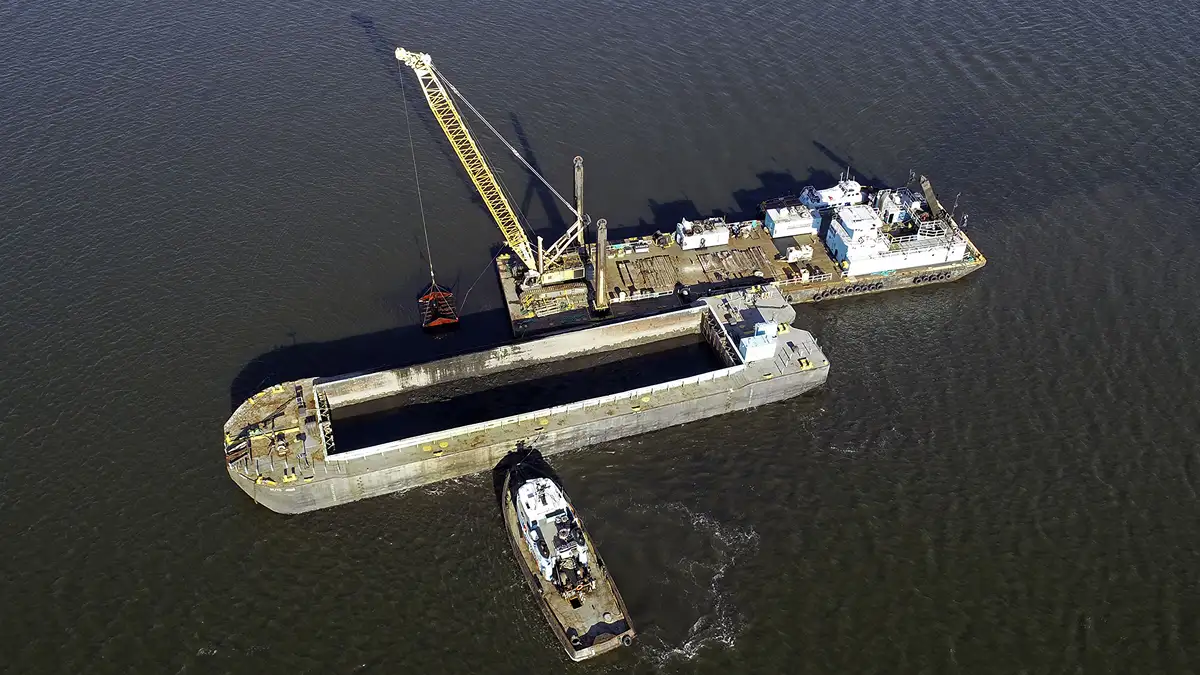
Conclusion
Optimizing the performance of a dredging pump involves a careful balance of factors such as flow rate, pressure, and cavitation. By understanding these factors and how they impact the pump’s efficiency, operators can ensure that their dredging pumps perform optimally, reduce downtime, and extend the life of their equipment. Furthermore, selecting the right dredge pump for the specific dredging task is essential for achieving the best results. Whether you are looking for a dredge pump for sale or seeking to replace an existing one, choosing the appropriate pump that meets your flow rate, pressure, and material-handling needs will help you get the most out of your investment. Always ensure that the dredge pump is properly maintained and operated within its optimal parameters to maximize its lifespan and efficiency.




